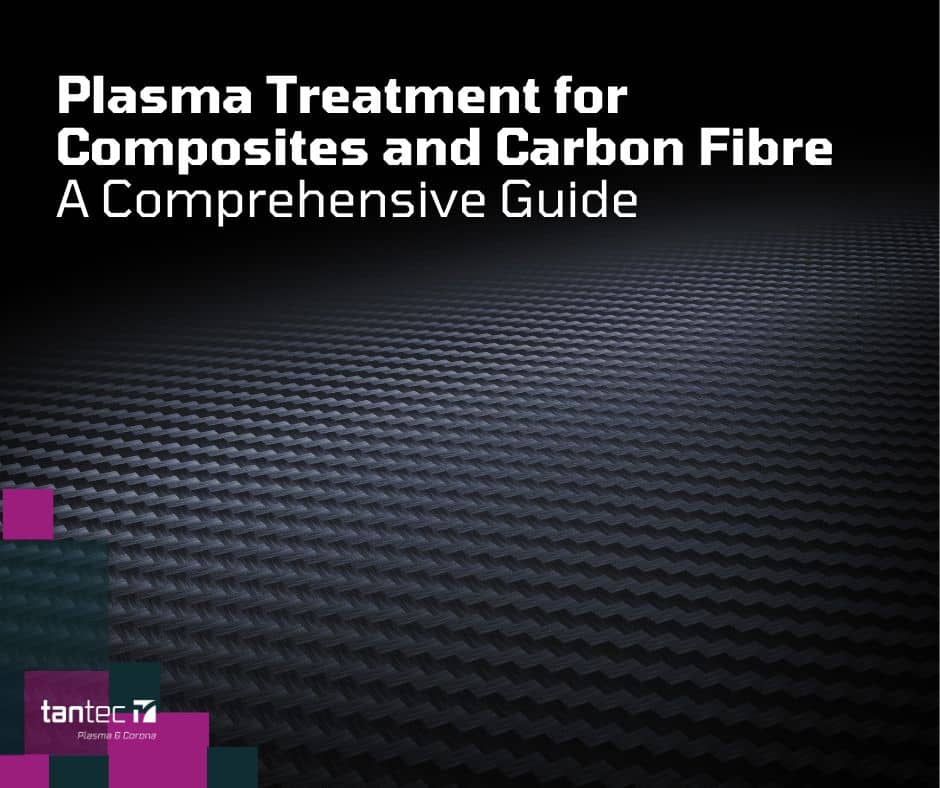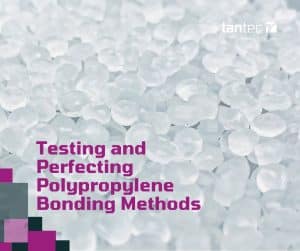
How to use Dyne Pens and Test Inks
Read this to find out the official way to get

Composites are becoming increasingly important in manufacturing, whether these are more traditional carbon fibre composites, or natural fibre, dyneema or other composites, they are renowned for their strength-to-weight ratio, making them a preferred choice in industries like aerospace, automotive, motor sport, sports equipment, and more.
However, to fully harness the potential of composites and carbon fibre, it’s crucial to optimise the surface properties. Plasma treatment is a powerful technique that can significantly enhance the performance of composite materials. In this comprehensive guide, our experts at Tantec UK explore the science behind plasma treatment, its benefits, applications, and the various methods used in this process to improve carbon fibre.
Carbon fibres are composed of thousands of carbon atoms bonded together in long chains, providing exceptional strength, stiffness, and lightness. They are commonly used in various forms, such as woven fabric, unidirectional tape, and prepreg sheets, to manufacture a wide range of products.
The surface properties of carbon fibre present some challenges:
Manual Preparation: Abrading a composite material can often lead to improved performance, however, as a manual technique it can be tricky to ensure repeatability and have perfect accuracy especially on thinner components.
Costly and Time Consuming: applying a primer, peel ply material or other techniques can be highly effective, but costly, time consuming and requiring a skilled worker with significant PPE requirements.
Poor Adhesion: The inert nature of carbon fibre surfaces hinders adhesion of coatings, adhesives, and matrix materials in composites, especially across dissimilar materials like bonding composites to metals or polymers.
Surface Contamination: During manufacturing and handling, carbon fibre surfaces can accumulate contaminants, including oils, dust, and release agents. These can be especially tricky to remove on complex shapes such as components for motor sport.
Material and Design Choices: Using a material, adhesive or printing ink because it’s the only one which will reliably bond to a material leads to compromise in other areas. Ideally, choosing the right material that has the right colour, cost, chemical resistance etc. should be key.
Plasma treatment is a surface modification process that involves exposing the material’s surface to either a high pressure (atmospheric) treatment, or a low-pressure, vacuum plasma. Plasma in either technology is an energetic gas, and a simple way to transfer energy (and chemistry) to the material surface. This treatment induces various chemical and physical changes on the surface, leading to improved properties without the need for harsh chemicals, manual abrasion or intermediate layers. For carbon fibre, plasma treatment is a game-changer:
Enhanced Surface Energy: Plasma treatment introduces polar functional groups to the carbon fibre surface, increasing its surface energy. This improvement promotes better adhesion.
Surface Cleaning: Plasma treatment effectively removes contaminants, oils, and residues, creating a pristine surface for subsequent processes. Really useful on components where cleaning would be tricky, such as complex shapes or components with holes.
Chemical Activation: Functional groups on the surface can react with adhesives, coatings, and matrix materials, leading to stronger bonds and opens the options for materials, adhesives and other processes so you can choose the right tools for the job.
Improved Wettability: The increased surface energy improves wetting, which is the flow of a liquid over the surface. Ensuring uniform coverage of coatings and resins including in to blind holes, or over hard to coat areas.
Plasma treatment for carbon fibre can be achieved through various methods:
Atmospheric Plasma: This method uses a nozzle with a continuous jet of plasma which can be targeted to specific areas. Especially useful for channels, sealing areas or when used with an adhesive dispensing system.
Vacuum (Low-Pressure) Plasma: Low-pressure, Vacuum Plasma treatment exposes carbon fibre to a controlled vacuum environment. The key reason to use this system is that the plasma will get to 100% of the part, without the need for tooling or automation: simply put the part in the machine, close the door and press go.
Corona Treatment: While not a technology for conductive composites; fibre and resin systems such as hemp/ natural fibre, polypropylene and dyneema can benefit from corona treatment which is a cost effective and high performing method for treatment of sheets, boards and panels.
Plasma-treated composites and carbon fibre find applications across various industries:
Aerospace: Enhanced adhesion and surface preparation make plasma-treated materials ideal for aircraft components, including structural and decorative parts. Bonding composites to other materials such as aluminium honeycomb, or to painted surfaces is guaranteed with plasma.
Automotive: Low volume, specialist manufacturing may be sensible to spend time preparing using traditional methods. However, to use composites across a wider range of applications, an automated and repeatable technology must be used. Plasma is environmentally friendly, highly repeatable and can be easily automated, making it an excellent technology for increasing production.
Sports and Recreation: Tennis rackets, bicycles, and other sports equipment benefit from improved adhesion and durability with plasma-treated carbon fibre, allowing simple problems such as brand labels and prints to adhere better, through to performance elements such as bonded sections to remain strong and in place for much longer.
Energy: Whether wind turbine, oil and gas or cable systems, these infrastructure projects are frequently in situ for long periods. Enhanced performance for subsea connectors, for wind turbine elements or print adhesion on to pipe systems, plasma can help.
Medical: New materials, offering light weight, strength or other advantages are being looked in to for many applications. Getting the best of these new materials isn’t always straight forward, but using plasma can level the field and allow for composites to be used.
Plasma treatment is a transformative technology for carbon fibre, addressing surface-related challenges and optimising its performance. Whether in aerospace, automotive, sports equipment, plasma-treated carbon fibre is at the forefront of innovation, enabling the development of stronger, lighter, and more durable products.
To keep up to date with the latest news head to our Knowledge Hub or follow us on social media.

Read this to find out the official way to get

Polypropylene (PP) bonding is traditionally a difficult task due to

Tantec UK and sister company Ebble Manufacturing work in a
40A Crossgate Road
Park Farm Industrial Estate
Redditch
B98 7SN
Tel: 01527 304 004
Email: info@tantec-uk.com
